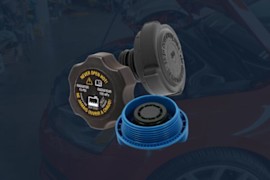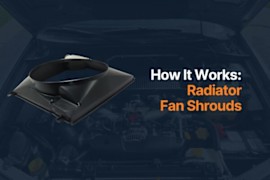{
"lazyNodes": false,
"abFitnotesFlag": false,
"abCrawlReviews": false,
"productOptionsCookie": false,
"orderDelayFlag": false,
"skipSessionCookie": false,
"covidMessage": false,
"fullTitleCookie": false,
"nrLoggerCookie": false,
"checkoutReviewCookie": false,
"productOptionSeqCookie": false,
"maintenanceFlag": false,
"bufferETACookie": false,
"multiShippingDiscountFlag": false,
"newFitmentFlag": false,
"surveyOptInFlag": false,
"crossSellFlag": false,
"skuMappingFlag": false,
"paySplitCookie": false,
"callDisableFlag": false,
"zipPaymentFlag": "u",
"hassleFreeReturn": false,
"lifetimeReplacement": false,
"cpn_off": false
}Jeep CJ7 Radiators
Shop Catalog
![]() WARNING: This product can expose you to chemical which is known to the State of California to cause cancer and birth defects or other reproductive harm. For more information go to www.P65Warnings.ca.gov.
WARNING: This product can expose you to chemical which is known to the State of California to cause cancer and birth defects or other reproductive harm. For more information go to www.P65Warnings.ca.gov.
![]() WARNING: This product can expose you to chemical which is known to the State of California to cause cancer and birth defects or other reproductive harm. For more information go to www.P65Warnings.ca.gov.
WARNING: This product can expose you to chemical which is known to the State of California to cause cancer and birth defects or other reproductive harm. For more information go to www.P65Warnings.ca.gov.
![]() WARNING: This product can expose you to chemical which is known to the State of California to cause cancer and birth defects or other reproductive harm. For more information go to www.P65Warnings.ca.gov.
WARNING: This product can expose you to chemical which is known to the State of California to cause cancer and birth defects or other reproductive harm. For more information go to www.P65Warnings.ca.gov.
Product Questions & Answers
Customer Guides
Symptoms of a Broken Jeep Cj7 Radiator
A combustion engine works best when it's at a fairly high operating temperature. However, work it too hot and your car may stall and overheat. That's why the motor of the Jeep CJ7 needs a reliable radiator to keep the temperature at a safe and workable level. The condition of this part worsens as the Jeep is used and abused. The following are some of the many symptoms you should look for to know if your CJ7 has a broken radiator:
Coolant leak
Seeing a puddle of coolant and water on your garage floor after parking the Jeep overnight is one sign of a radiator that needs servicing. The liquid you see should only stay inside the components of the cooling system the whole time. If this gets out, it simply means that the radiator, one of the hoses, the pump, or any other part of the system has a leak. Take your time to spot any breaches and see if the problem can be solved by simple repairs or if a complete installation of new ones are necessary.
Discolored coolant
Depending on the type and brand of coolant your pour in your Jeep's radiator, its color should either be somewhere in between a blue, green, or yellow hue. It should also have a smooth and flowing consistency that's close to pure water. Symptoms of a bad radiator are when the liquid inside it, or on the puddle on the ground (if you have a leak), is brownish and feels sludgy. These indicate that the radiator has lots of internal rust and corrosion, and some of the bad particles have ended up in the fluid. Radiators in this state should immediately be replaced.
Weird temperature readings
A working radiator and cooling system should show you a gauge with a fairly stable temperature reading. A needle that acts in a weird and unpredictable manner is caused by the same rust particles being washed away from the radiator. Rather than staying in the fluid, these relocate to another area inside and hinder the proper flow of coolant. Replacement is the only solution for this type of situation.
Radiator issues are fairly common to Jeeps. Count the CJ7 to the list of vehicles that are prone to failures with this part. If you continue to drive yours with a radiator that's beginning to get weak and rusty, chances are great that your car's engine will suffer from overheating. You can prevent this type of problem by performing preventive measures to ensure that this part will function well for a very long time. The following are some maintenance tips you can do to take care of your Jeep's radiator:
Perform pressure tests.
Radiator fluid needs a closed and intact circuit to allow the liquid to circulate. Any leaks, gaps, and holes results in a loss of much needed pressure. Once in a while, do a pressure test on the radiator to ensure that the cooling system is intact. This is one practice that can easily be done with simple tools. It's also a good way to detect any problems at its early stages before it gets any worse.
Check other components.
The causes of various radiator problems aren't usually found on the radiator itself. Instead, its roots can be traced back to other parts of the cooling system. Check the radiator cap, thermostat, fan, hoses, water pump, and other components that can affect the performance of the radiator. All these can be the source of problems like leaks and loss of pressure.
Flush the radiator.
Remove the old radiator fluid after every two years of driving the Jeep. This liquid tends to get dirty and mucky as it circulates in the cooling system. If you forget to do this, the impurities may get stuck in the lines and tubes of the radiator. This results in the blocking of the path of the liquid and a loss in cooling efficiency.
Properly refill the radiator.
When refilling the radiator, pour in the right amount of water and coolant. Coolant alone won't work well. It also needs some water to give it a smooth and flowing consistency. Remember to only use distilled water and high quality coolant to limit the amount of dirt and impurities that can enter the radiator.








